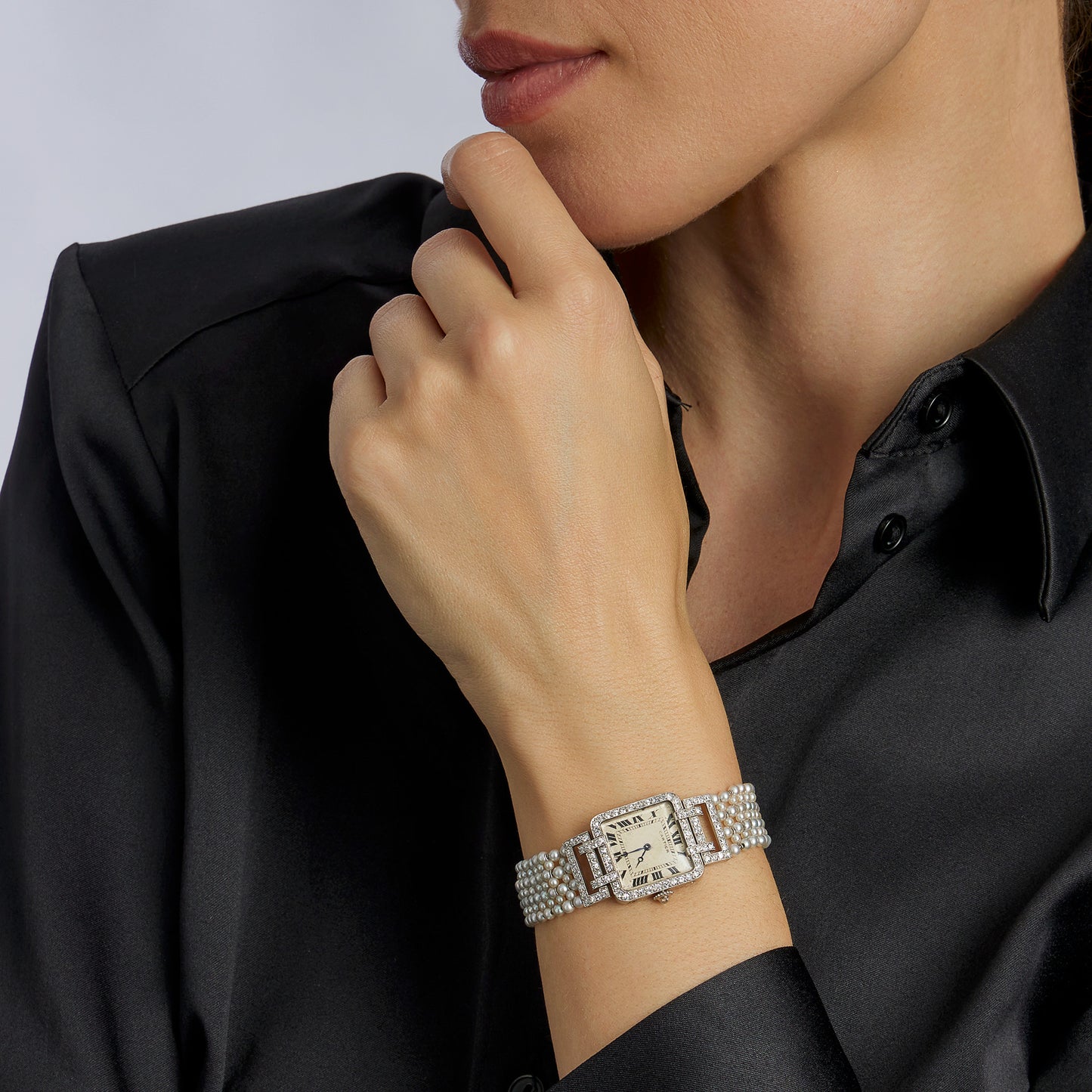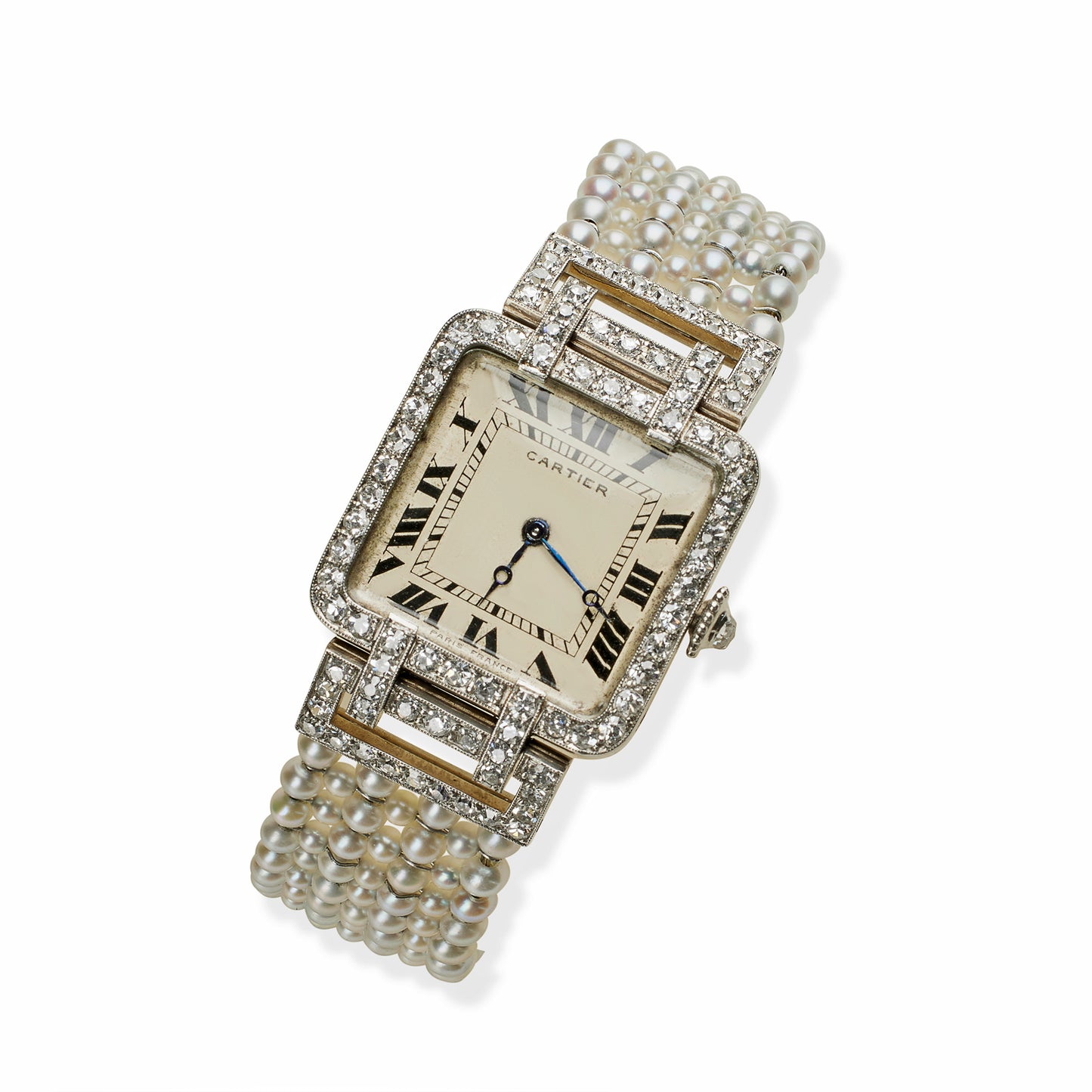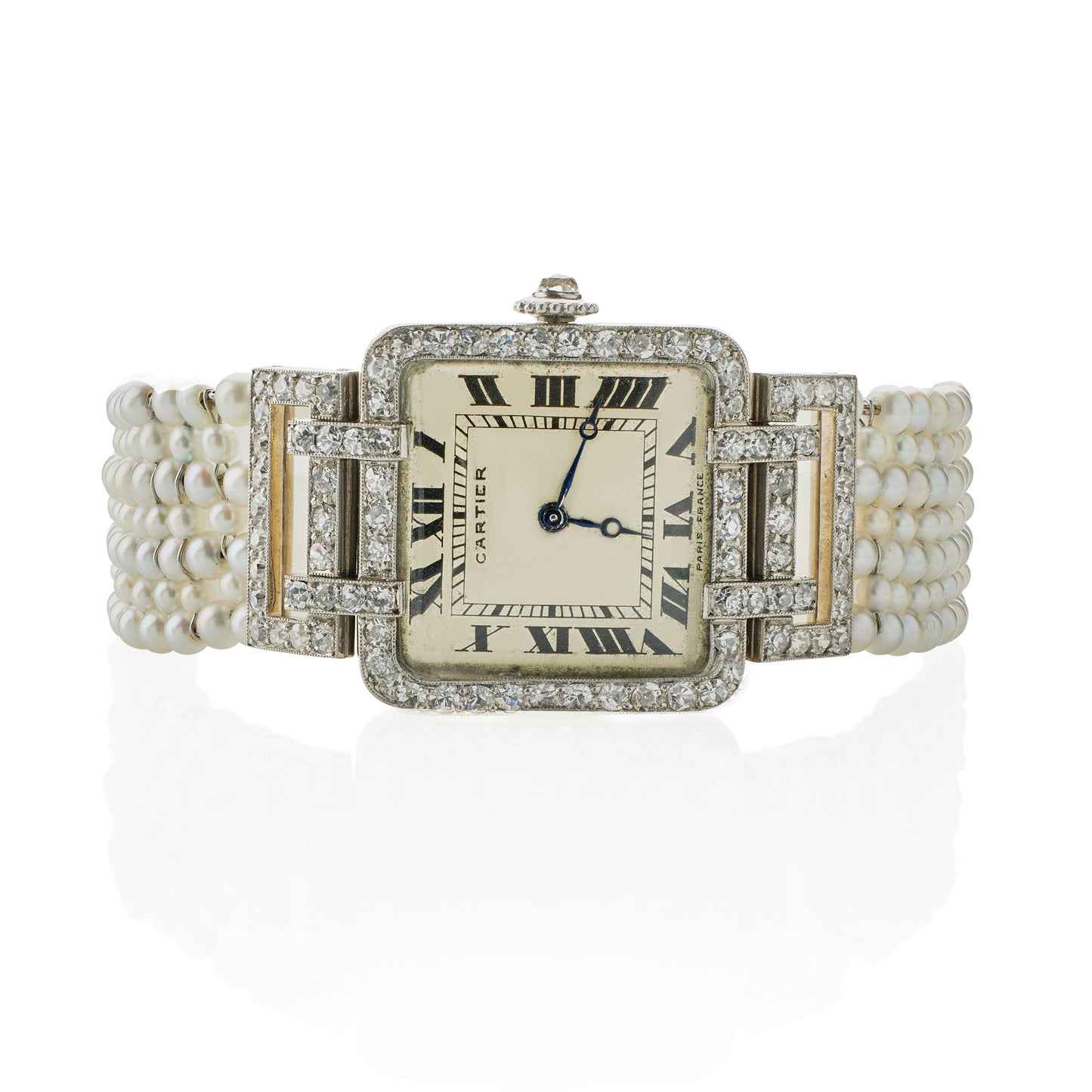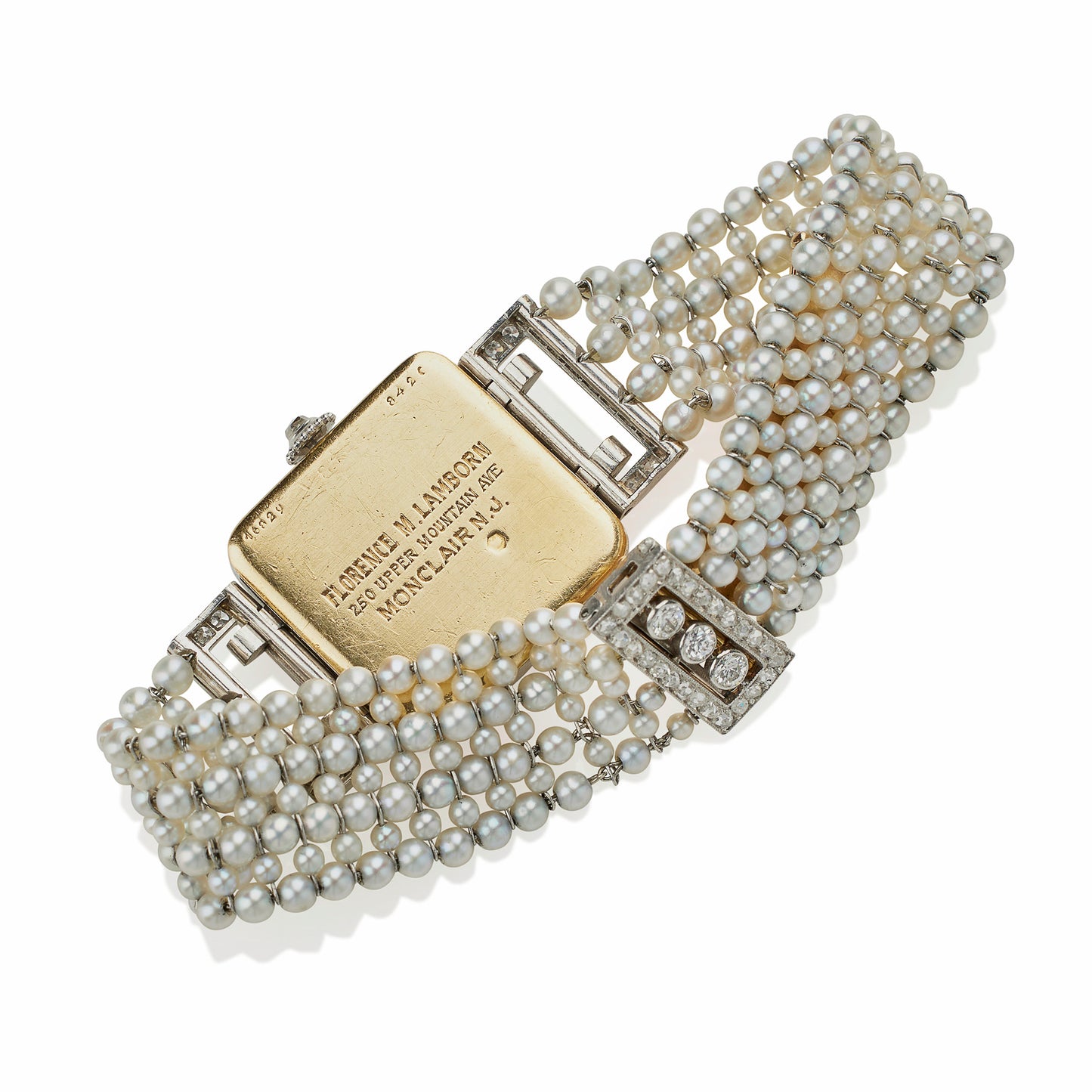Cartier Paris and Edmond Jaeger Seed Pearl and Diamond Wristwatch
Item #: W-20594
Artist: Cartier
Country: France
Circa: 1910-1920
Dimensions: 5.75" interior circumference x 0.75" width
Materials: Seed pearls; 112 single-cut and rose-cut diamonds (with approximate total weight 3.50 carats); 18K Gold and Platinum
Signed: Dial signed CARTIER, movement and interior case signed EW&C Co. Inc. and European Clock and Watch Co., Bte SGOG. case and deployant clasp marked EJ for Edmond Jaeger, case, lugs and clasp with French guarantee stamps, case marked 16829 and 8421, clasp marked 366, STE 10398, reverse of case further engraved "Florence M. Lamborn. 250 Upper Mountain Ave MONCLAIR NJ"
Literature: For a discussion of the development of the wristwatch at Cartier, including the design of the square dial with corners such as this, see Cartier: Jewelers Extraprdinary, by Hand Nadelhoffer, pp. 273-275.
Item #: W-20594
Artist: Cartier
Country: France
Circa: 1910-1920
Dimensions: 5.75" interior circumference x 0.75" width
Materials: Seed pearls; 112 single-cut and rose-cut diamonds (with approximate total weight 3.50 carats); 18K Gold and Platinum
Signed: Dial signed CARTIER, movement and interior case signed EW&C Co. Inc. and European Clock and Watch Co., Bte SGOG. case and deployant clasp marked EJ for Edmond Jaeger, case, lugs and clasp with French guarantee stamps, case marked 16829 and 8421, clasp marked 366, STE 10398, reverse of case further engraved "Florence M. Lamborn. 250 Upper Mountain Ave MONCLAIR NJ"
Literature: For a discussion of the development of the wristwatch at Cartier, including the design of the square dial with corners such as this, see Cartier: Jewelers Extraprdinary, by Hand Nadelhoffer, pp. 273-275.





















